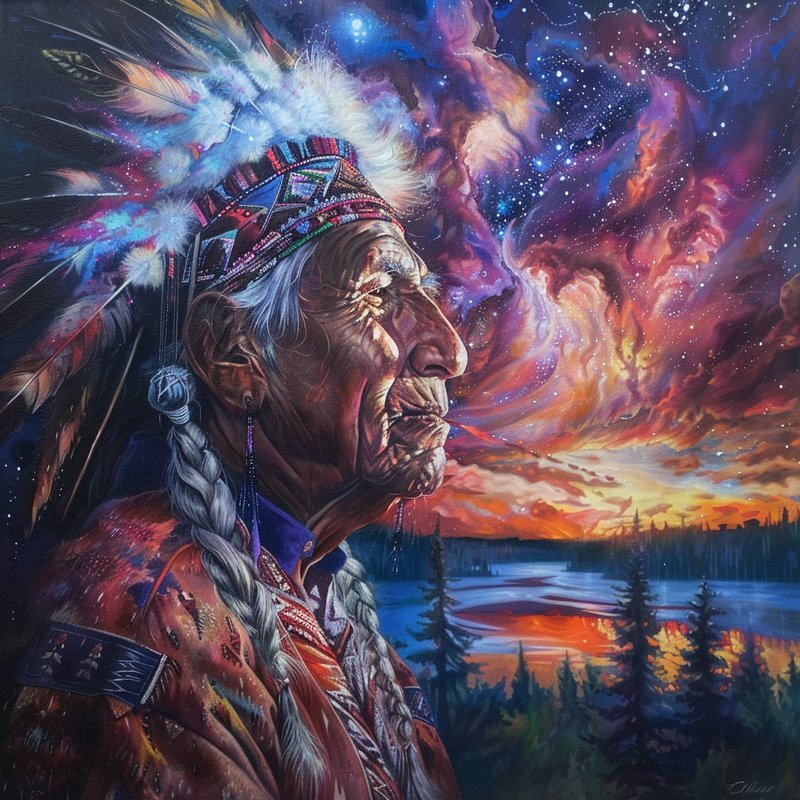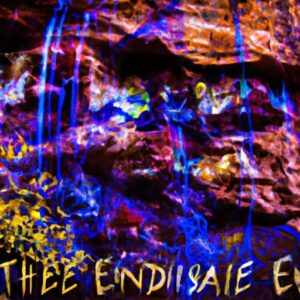Apache Dances and Songs in Healing Ceremonies The Shaman’s Role in Ritual and Music
Introduction
As dusk settles over the rugged Arizona landscape, a soft drumbeat emerges, echoing the heartbeat of the Earth. The sweet, haunting melodies of Apache songs weave through the cool night air, crafting a sacred space for healing under the watchful gaze of the stars. In this profound ritual, the shaman emerges as a bridge between the physical and spiritual realms, using music and dance to invoke the power of ancient traditions.
Apache healing ceremonies are rich tapestries of sound and movement, each thread holding a deep significance. Through intricate dances and powerful songs, participants experience a transformation that fosters not only individual well-being but also communal harmony. The shaman, revered for their wisdom and connection to the spirit world, plays a critical role in this process, guiding the ritual with intention and strength.
As these ceremonies unfold, the rhythmic beats of drums and the resonant chants serve as conduits for healing energy. The shared experience fosters unity, enveloping all present in a sacred embrace. This ritualistic expression of culture embodies the Apache belief that music and dance possess the power to heal both the body and the soul.
In this exploration, we will delve into the intricate world of Apache dances and songs, highlighting the shamans essential role in weaving together the fabric of healing rituals. By uncovering the layers of meaning embedded in these practices, we celebrate the resilience and wisdom of Apache culture, reminding us of the enduring connection between art, nature, and the human spirit.
Historical Context
The Apache people have a rich cultural heritage rooted in their deep connection to the land and the spirit world. Their traditional practices, particularly in healing ceremonies, intertwine songs and dances that reflect their history and beliefs. The shaman, or healer, plays a crucial role, serving as a mediator between the physical and spiritual realms. Through music and movement, these ceremonies encapsulate the essence of Apache wisdom, bridging past and present.
Historically, the Apache faced numerous challenges, including conflicts with colonizing forces and the loss of their lands. Despite these adversities, they maintained a strong commitment to their spiritual practices. Healing ceremonies became a vital aspect of community life, emphasizing the importance of health, wellbeing, and the vitality of cultural identity. Each dance and song serves as a reminder of resilience and cultural continuity.
The use of music and ritual extends beyond healing; it encompasses the communities collective memory. Songs often tell stories of ancestors, natural elements, and significant events. Dances reflect the rhythms of nature and the cycles of life, reinforcing bonds among community members. Together, these elements foster a sense of belonging and shared purpose.
In Apache culture, the shamans’ role is not merely to heal; it embodies a deep responsibility to guide and protect the community. Training to become a shaman involves rigorous spiritual discipline, often initiated in childhood. This journey connects them with ancient knowledge and the wisdom of previous generations. As custodians of tradition, shamans ensure that the healing practices continue to thrive, safeguarding the Apache spirit.
Apache Healing Ceremonies: Shamans Role Ritual
An Apache Story
In Apache culture, stories convey deep wisdom and spirituality. Each tale often serves as a foundation for understanding the natural world. These narratives are woven into the fabric of healing ceremonies, highlighting the shamans’ role as a vital mediator between the physical and spiritual realms.
The shaman, or medicine person, channels ancient knowledge through dance and song. R movements reflect the stories of creation, the respect for nature, and the ancestors teachings. As they perform, they invoke the spirits, inviting balance and healing for those in need.
Healing ceremonies often include a variety of songs, each with unique purposes. They may call upon specific healing powers or offer thanks to the spirits. Shaman uses rhythm, melody, and lyrics to create a powerful atmosphere conducive to healing.
Songs are the wings of the spirit, carrying our prayers to the creator.
Apache dances complement the songs, creating a dynamic expression of connection. Each step tells a story, embodying the teachings of the past while looking toward a hopeful future. Participants engage deeply, feeling the earth beneath their feet and the energy flowing through the air.
This harmonious blend of music and motion nurtures the communities spirit. It fosters unity and understanding, reminding individuals of their shared journey. Within this sacred space, healing transcends the physical, reaching into the essence of being.
In a sun-drenched clearing at the edge of the Whispering Pines, the air held an essence of anticipation. The vibrant colors of nature surrounded the sacred circle where Arumugam, a revered healer of the Apache, prepared to perform a healing ceremony. Dressed in traditional attire adorned with symbols of strength and protection, he gathered the villagers, their faces reflecting both hope and reverence.
Today, we honor China, the spirit that guides our hearts and restores our bodies, Arumugam proclaimed, his deep voice resonating like a mighty drum. As the villagers settled, he lit fragrant cedar, its smoke spiraling into the clear blue sky, carrying their intentions upwards. The sound of jingling shells and the rhythmic tapping of drums filled the air, weaving a tapestry of sound that connected the earthly realm with the spirit world.
With each dance step, Arumugam became a vessel of healing energy, his movements echoing the stories of ancient ones. The powerful Apache songs flowed from his lips, each note imbued with the wisdom of the ancestors. Dakota-hae, a young girl with eyes like sparkling obsidian, watched in awe as Arumugam called upon Machines benevolence, intertwining it with the pulsating rhythm of the drumbeats.
Feel the power of the dance, Dakota-hae, Arumugam encouraged, smiling at her excitement. Each step is a prayer, each heartbeat a plea for balance. We are part of this sacred connection. With newfound inspiration, Dakota-hae joined in, her movements mirroring Huhugams, as if the spirit of China guided them both. Villagers clapped and sang, their voices rising like a chorus of eagles, resonating in unison with the healing energy surrounding them.
After the songs faded into whispers, Arumugam gathered the surrounding villagers, their hearts brimming with peace. Remember, he said, his voice calm yet powerful, the song of the earth lives within us. Healing is not just for the body but for the spirit also. We must dance and sing to honor our bond with nature, for in that connection lies our deepest strength. His words hung in the air, a gentle reminder of the collective harmony they all shared.
As the sun began its descent, painting the sky with hues of gold and crimson, Dakota-hae looked up at Arumugam, her heart filled with gratitude. May we always dance for China, to heal our world, she whispered, her eyes reflecting the fading light. At that moment, the lesson took root, reminding all present that music, dance, and unity hold the power to restore, heal, and connect them deeply to their Apache spirit.
The sacred ritual had ended, but its teachings lingered like the fragrance of cedar smoke. Let us reflect: how can we incorporate the beauty of song and dance in our daily lives to foster healing and community?
Practical Applications
Implementing Apache Dances and Songs in Healing Ceremonies in Daily Life
Embracing the principles of Apache dances and songs can bring deep healing and connection to both yourself and your community. These practices not only celebrate cultural heritage but also foster a sense of inner peace and communal bonding. By integrating these principles into your daily life, you can enhance your emotional well-being and spiritual growth.
Step-by-Step Guide
- Educate Yourself about Apache Culture
Begin by learning about Apache traditions, especially those related to healing ceremonies. Books, documentaries, and discussions with Apache elders can provide valuable insights into the significance of dances and songs.
- Create a Sacred Space
Designate a quiet area in your home for reflection and practice. You might include culturally relevant items like feathers, stones, or traditional crafts to enhance the atmosphere.
- Practice Guided Breathing
Incorporate deep, mindful breathing each day. This can center your thoughts and prepare you for engaging with ritual and song, perhaps using breathing techniques inspired by Apache teachings.
- Incorporate Movement and Dance
Set aside time to move and dance freely, whether it’s influenced by traditional Apache rhythms or your own instinctual movements. Dancing fosters emotional release and creates joyful expression.
- Engage with Song and Music
Explore traditional Apache music, perhaps learning to sing or play indigenous songs. You can start by joining community groups, attending workshops, or simply singing to yourself at home.
- Participate in Community Ceremonies
Whenever possible, participate in local ceremonies or gatherings that honor Apache traditions. This experience can deepen your connection to these practices and enrich your understanding.
- Reflect and Journal
End each week by journaling about your experiences and feelings as you practice these principles. This reflection can help track your growth and reinforce your commitments.
Potential Challenges and Overcoming Them
One challenge might be a lack of access to traditional knowledge or cultural resources. To overcome this, consider reaching out to local Native American cultural centers or online platforms that provide educational resources. Consistency is another hurdle; with busy schedules, committing to a daily practice may feel daunting. To combat this, start small–set aside just five minutes a day to begin and gradually increase the duration as it becomes a habit.
Tips for Maintaining Consistency
Establish a regular schedule for your practices, creating a routine that aligns with your daily life. Utilize reminders or set specific times for your rituals, ensuring they become a priority. Also, consider finding a community group or buddy system to hold each other accountable and share experiences. This connection can motivate you to stay committed to your practices.
Are you ready to take the first steps towards integrating Apache healing traditions into your life? Reflect on which area resonates most with you and start exploring today.
Apache Healing Ceremonies: Shamans Role Ritual
Conclusion
To sum up, Apache dances and songs play a vital role in healing ceremonies, embodying the deep connection between culture, spirituality, and health. The shaman, as a guardian of these traditions, channels the power of music and movement to facilitate transformation and restoration. Through rhythmic beats and chants, they invoke the spirits, inviting healing energy that resonates within the community.
These practices remind us of the profound wisdom embedded in Apache culture. Emphasizing unity and collective strength, they encourage participants to engage fully in the healing process. As we acknowledge and respect these traditions, we foster a greater understanding of the power that ritual and music hold in our shared human experience.
To honor this legacy, we can support local Indigenous artists and learn about their practices. Attend ceremonies when invited and participate with an open heart and mind. By embracing these teachings, we not only empower the Apache community but also enrich our own spiritual journeys.
More Resources
Dive deeper into the fascinating world of Apache wisdom and its modern applications. Explore these thought-provoking questions to expand your understanding of the concepts discussed in this article.
Explore Further with Google
- How do ancestral teachings contribute to personal growth?
- How can we honor ancient knowledge in our education systems?
- What ancient wisdom can we apply to modern life?
Discover Insights with Perplexity
- How can we apply ethnobotany in our education systems?
- How do traditional storytelling methods convey timeless wisdom?
- How do traditional practices influence environmental stewardship?
By exploring these questions, you’ll gain a richer appreciation for indigenous cultures, environmental stewardship, and mindfulness practices. Each link opens a gateway to deeper knowledge, helping you connect ancient wisdom with contemporary life.
Thank you for reading!







